- Home
- TV History
- Network Studios History
- Cameras
- Archives
- Viewseum
- About / Comments
Skip to content


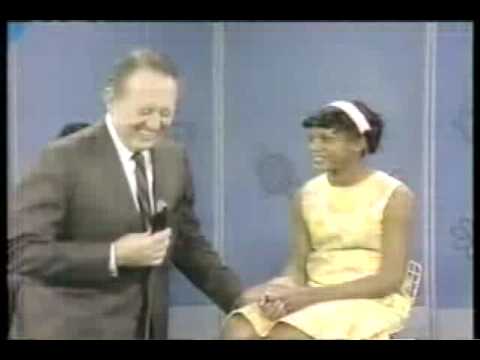

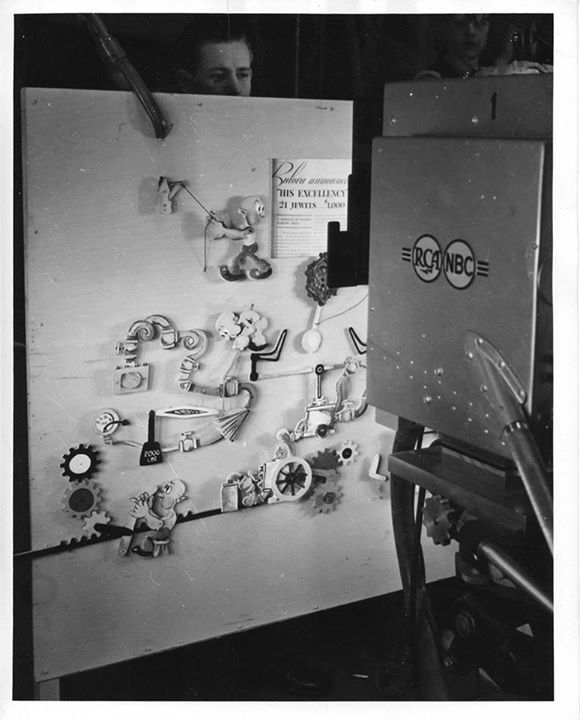

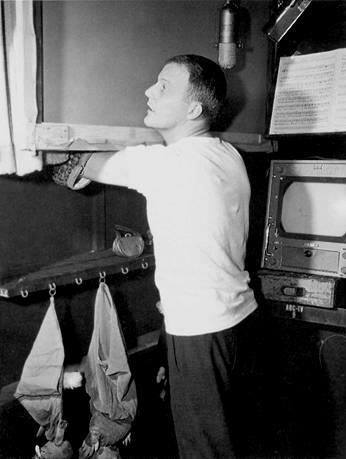

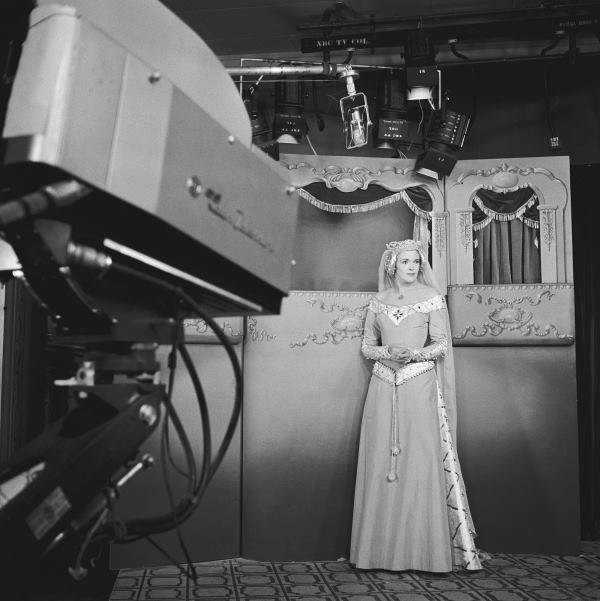

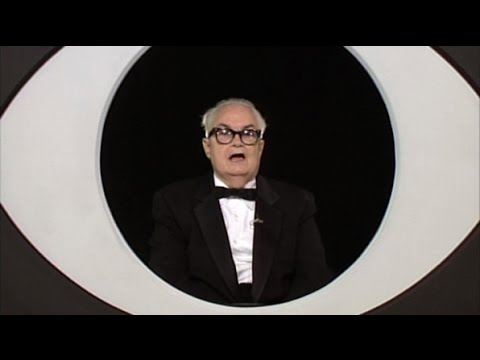

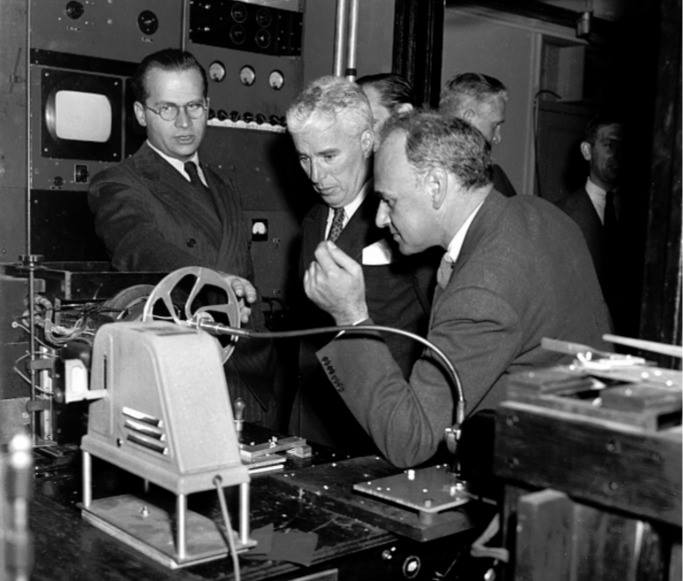

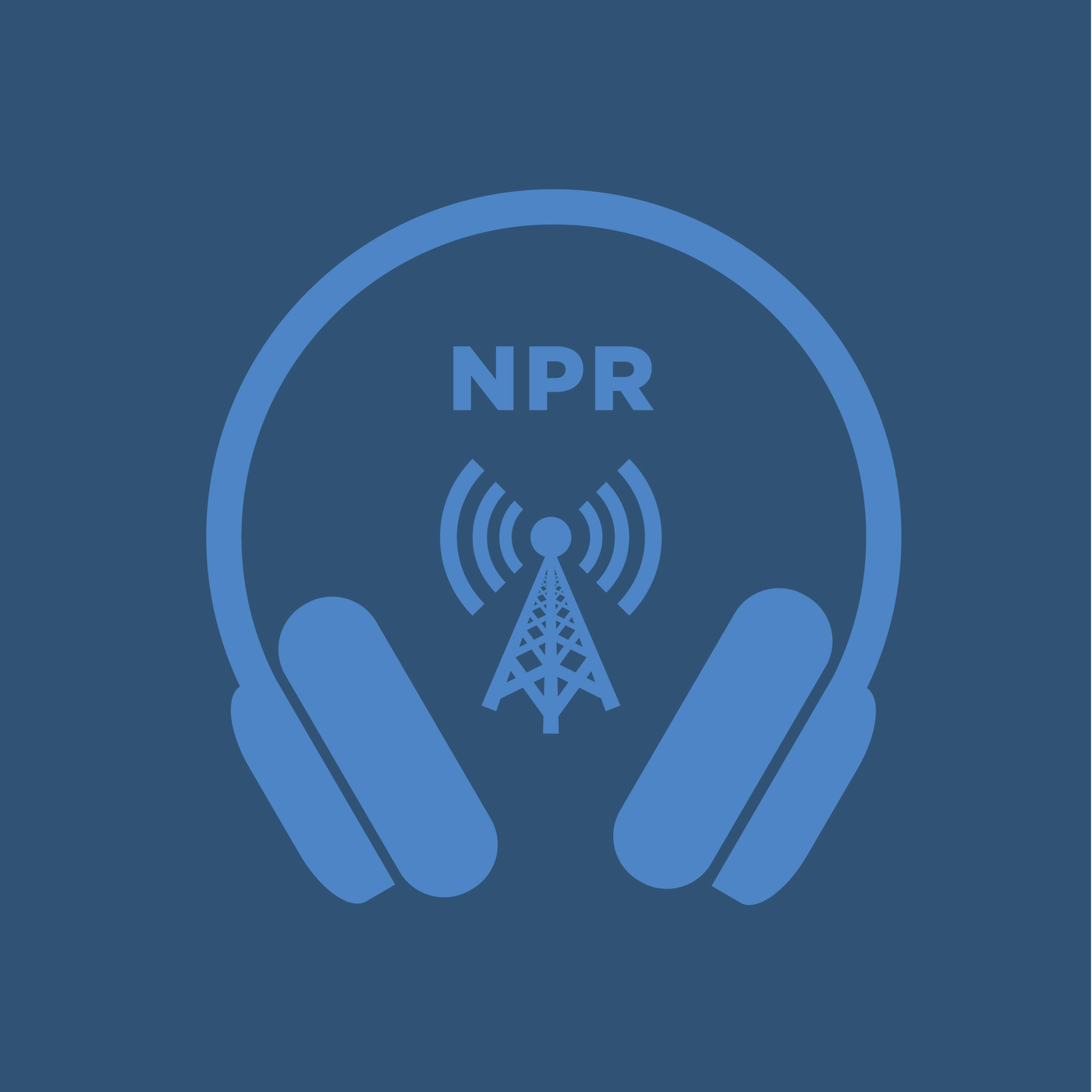

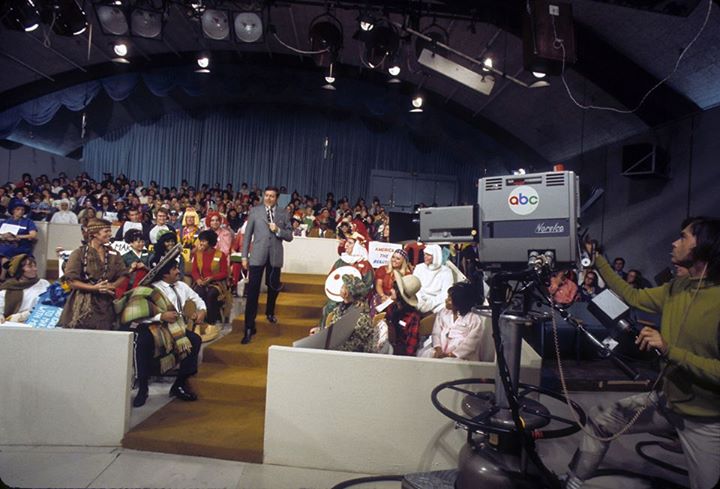



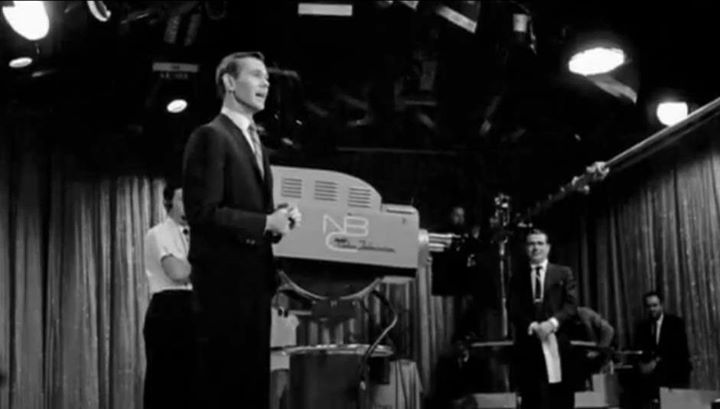

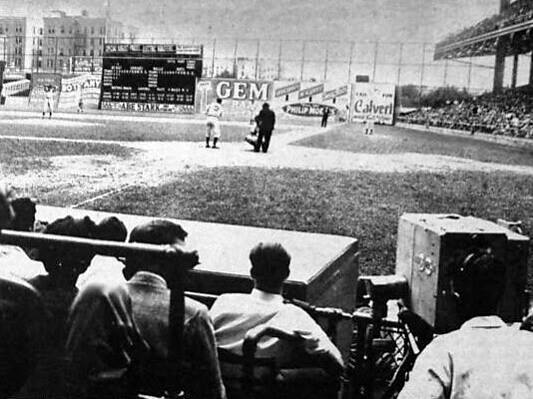

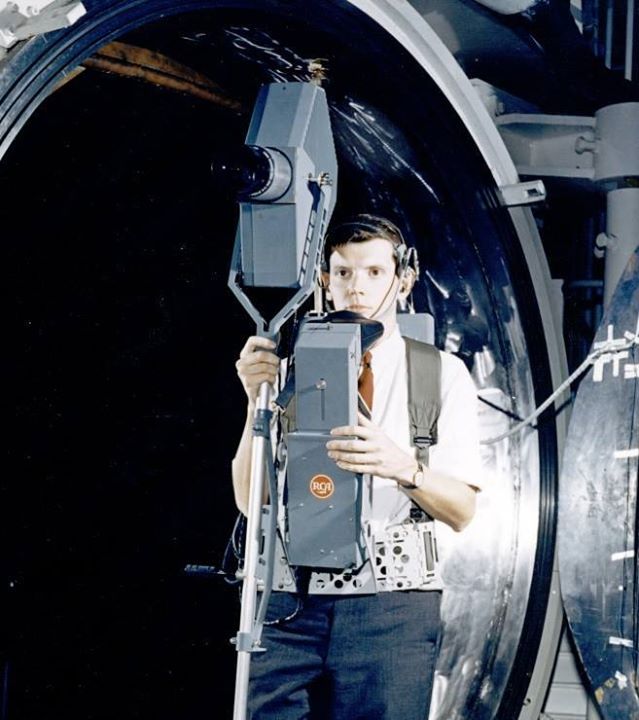

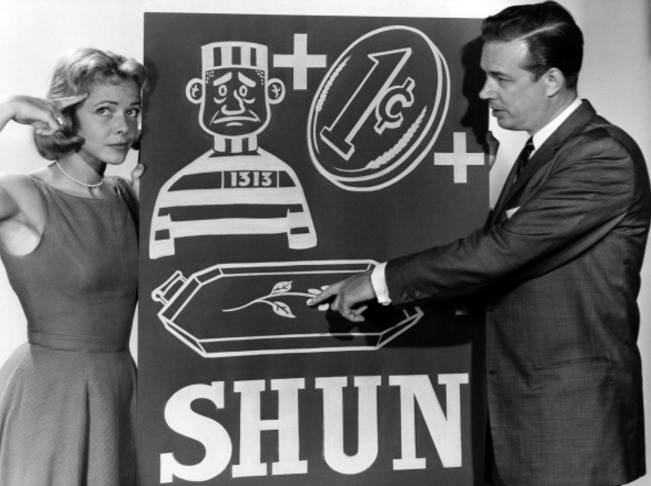



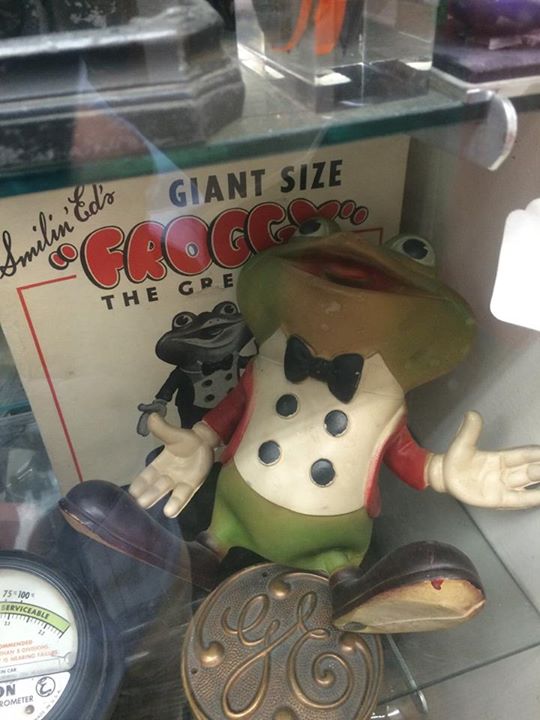





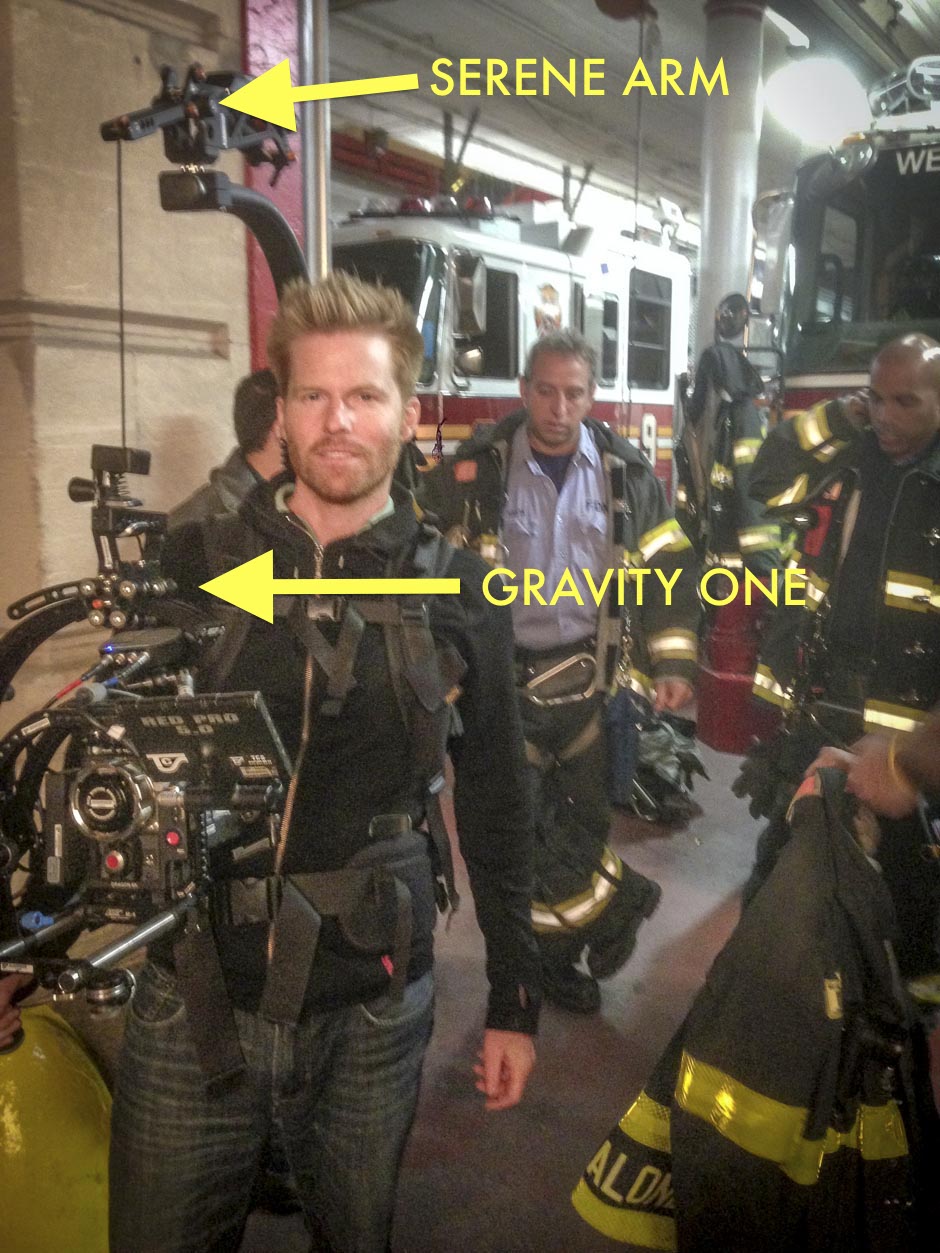

Posts in Category: TV History
Page 17 of 136
« Previous
1
2
3
4
5
6
7
8
9
10
11
12
13
14
15
16
17
18
19
20
21
22
23
24
25
26
27
28
29
30
31
32
33
34
35
36
37
38
39
40
41
42
43
44
45
46
47
48
49
50
51
52
53
54
55
56
57
58
59
60
61
62
63
64
65
66
67
68
69
70
71
72
73
74
75
76
77
78
79
80
81
82
83
84
85
86
87
88
89
90
91
92
93
94
95
96
97
98
99
100
101
102
103
104
105
106
107
108
109
110
111
112
113
114
115
116
117
118
119
120
121
122
123
124
125
126
127
128
129
130
131
132
133
134
135
136
Next » 

September 2, 1963…A Red Letter Days At CBS News
On September 2, 2016
- TV History
September 2, 1963…A Red Letter Days At CBS News
On a Monday evening 53 years ago today, the first half hour network news show debuted. From the CBS newsroom studio in the Graybar Building, adjacent to the Grand Central studios, Walter Cronkite reported for twice as long as anyone ever had on an evening news show.
The next Monday, September 7, NBC’s “Huntley Brinkley Report” did the same. Compared to today, their 22 minutes were full of the news they thought you needed to know, as opposed to today’s news fare which is “news” they think you would like to see.
The real news is in the first two blocks…the rest of it, you can find here on Facebook. -Bobby Ellerbee
“Evening News” marks golden anniversary of 30-minute broadcast
On Sept. 2, 1963, the “CBS Evening News” revolutionized journalism when it doubled in length — just in time for some of the most momentous stories in U.S. history


September 1, 1952…Art Linkletter Comes To TV + Surprise Video”
On September 1, 2016
- TV History
September 1, 1952…Art Linkletter Comes To TV + Surprise Video
“Art Linkletter’s House Party” premiered on CBS television on September 1, 1952, and had become television’s longest-running daytime variety show by the time it completed its 15 year run on September 5, 1969. But there was more to come!
The “Kids Say The Darnedest Things” segment of House Party was the most famous of all, and Linkletter interviewed an estimated 23,000 children. The popularity of the segment led to a TV series with the same title hosted by Bill Cosby on CBS from January 1998 to June 2000.
The video below has a GREAT surprise ending, so please take a look at Bill Cosby’s tribute to Art. Enjoy and share! -Bobby Ellerbee
https://www.youtube.com/watch?v=EBMOhM31EyM&feature=related
Video with Bill Crosby of a show
Television’s First Live Animation Project…January 1940, NBC Studio 3H
On August 31, 2016
- TV History
Television’s First Live Animation Project…January 1940, NBC Studio 3H
Although commercial television was sill about 18 months away, NBC was preparing for it. In this sequence of photos, we see a “Rube Goldberg” style presentation board on which all the parts move, to tell the story of Bulova’s new 23 jewel-movement watch.
At the time Bulova was the nation’s top advertiser over all media, including print and radio, and at their annual convention in New York in January of 1940, their ad agency was planning for the future. On the second day of the convention, the agency arranged a closed circuit television program to demonstrate the power of television ads. It originated in NBC Studio 3H and was viewed by Bulova executives several floors above the studio.
NBC knew television’s ability do demonstrate and showcase products would be revolutionary to advertisers, so to help them allocate budgets and think about their creative messages, the network set out to work with national accounts to showcase TV’s abilities. This must have worked, because the day NBC’s W2XBS became WNBT, the first commercial was for Bulova.
This was one of the first of the NBC closed circuit presentations, but others followed soon after, including Ford, American Tobacco, Colgate, Proctor & Gamble, Coca Cola and more. -Bobby Ellerbee
August 30, 1957…Ten Years Of “Kukla, Fran & Ollie” Come To An End
On August 30, 2016
- TV History
August 30, 1957…Ten Years Of “Kukla, Fran & Ollie” Come To An End
At the link is KFO creator Burr Tillstrom’s timeline of the shows milestones, starting with their October 13, 1947 debut as “The Junior Jamboree” on WBKB in Chicago, to their last show, which was also on WBKB.
http://www.richsamuels.com/nbcmm/kuklapolitans/kuklapolitan_chronology.html
In the five years that the show ran on NBC nationally, fan mail averaged 5,000 letters a day, and the show’s ratings rivaled Milton Burle’s and even Ed Sullivan’s at CBS. Be sure and click through the attached images…there is a surprise on one of them.
Thanks for the memories, Burr, Fran, Kukla and Ollie! By the way, KFO are also a big part of a post here from earlier today on an NBC color milestone, so visit the page by clicking on the blue EOAG text at the top left of this post. -Bobby Ellerbee
August 30, 1953…A Milestone For RCA Compatible Color Television
On August 30, 2016
- TV History
August 30, 1953…A Milestone For RCA Compatible Color Television
On this day in 1953, the first publicly announced experimental broadcast in compatible color (all the other tests had been unannounced), of a network program, was presented by NBC. It was the production of an original play called “St. George And The Dragon” on the “Kukla, Fran, and Ollie Show”.
Based on the 11th century tale, it was written by KFO founder Burr Tillstrom, with The Boston Pops Orchestra providing the pre-recorded musical score. The show originated at the The Colonial Theater in New York. A few weeks later, KFO went to Boston to perform this with the Pops before a live audience.
With so few color sets available, you may wonder why they would broadcast this in color, but the answer is in the “compatible” part of the common name for the RCA Dot Sequential System. RCA’s big advantage over the CBS Field Sequential System was that RCA’s promise, was to offer a color signal that would be compatible with the many black and white sets that had already been sold. CBS’s would require a new set, or a special conversion kit to existing sets.
The “TV Guide” story from May 15, 1953 offers a fuller description of that April 15th performance, and comparative color and black and white monitor shots.
The Colonial Theater…A Refresher Course
NBC/RCA leased the building in October 1951 in anticipation of moving their color tests here. In early ’52, RCA exhibited a color TV receiver-projector here which provided color pictures on a 9 x 12 foot theater screen.
In May of ’52, RCA/NBC began the process of making the theater into the first all color television studio. By October of ’52, it was ready, and 4 RCA TK40 prototype cameras, plus new color film chains were in use. Daily closed circuit test shows then moved from the experimental color Studio 3H at 30 Rock to The Colonial.
The second public NBC colorcast came from this studio on October 31, 1953 and was a one hour presentation the opera “Carmen”. The third colorcast was the November 22, 1953 “Colgate Comedy Hour”, with Donald O’Connor (the first commercial colorcast).
There is more on Kukla, Fran & Ollie coming today. Enjoy and share! -Bobby Ellerbee


August 30, 1993…”Late Show With David Letterman” Debuts On CBS
On August 30, 2016
- TV History
August 30, 1993…”Late Show With David Letterman” Debuts On CBS
Here is the entire first show from The Ed Sullivan Theater with some great surprises along the way. I love the edited clips from Sullivan introducing the show, and at around 12:30, Dave goes to the spirit world to talk with Ed, and there is a big surprise there.
At around 5:40, NBC’s Tom Brokaw drops in for a funny bit and around the 7:30 mark, Dave talks about the theater renovation and shows a couple of minutes of that process.
Dave’s first guest is the same first guest he had on the original NBC debut show, Bill Murray. Billy Joel is the musical guest. Enjoy and share! – Bobby Ellerbee
https://www.youtube.com/watch?v=N_H3sKdH_S8
Late Show With David Letterman: Dave’s First Show At CBS, August 30, 1993. Guests: Bill Murray & Billy Joel. Originally recorded on VHS from CBS affiliate KO…
August 29, 1940…CBS Color System First Demonstrated
On August 29, 2016
- TV History
August 29, 1940…CBS Color System First Demonstrated
In the rare photos below, we see the first incarnation of the CBS Field Sequential color system, with none other than Charlie Chaplin (silver hair) taking a look. Creator, Peter Goldmark (with glasses) and CBS Program Director, Gilbert Seldes (elbow on the deck) are explaining the system to their famous visitor.
Goldmark was the technical head of the CBS Television effort that started in 1939. On a belated honeymoon to Canada in March 1940, Goldmark and his bride decided to see the Technicolor movie, “Gone with the Wind”.
At the time, color movies were few and far in between and Goldmark was awed by the beauty and richness of Technicolor. Immediately, approaches to achieving television in color started spinning in his brain. Returning to New York he approached his supervisors to support experiments in developing a system.
By June 1940 he was able to show still pictures from a color slide on a 5-inch color monitor. In this photo, we see the slide projector lower left, and the 5-inch monitor with the external spinning color wheel in front of it. The slide projector is sending an image into a Farnsworth Image Dissector tube, which you can see attached to the monitor’s left side. The picture transmitted that day was a 343 line image broadcast over W2XAB on a 25 Watt transmitter. The broadcast came from the experimental color studio at CBS HQ, at 485 Madison Avenue. The first demonstration to the press came on September 4, 1940.
It has been quoted many times that the mechanical Field Sequential color system developed by Goldmark rivaled the quality of the Technicolor Process for films. Pictures published in Life Magazine in 1941 and 1950 comparing Kodachrome photographs of the original subject and photographs of a CBS color receiver show excellent color fidelity of even this earliest color television system. Enjoy and share. -Bobby Ellerbee
August 28, 1922…The First Radio Commercial Airs On WEAF
On August 28, 2016
- TV History
August 28, 1922…The First Radio Commercial Airs On WEAF
Did you know that AT&T invented radio advertising? It’s true, and their first and only involvement with broadcast radio, as a station owner, left a lasting legacy.
It’s only fitting that the story be told here by radio, and this five minute NPR piece tells it in detail using what radio is most famous for…theater of the mind. To hear it, click the large blue play button at the top left on the page that is linked below. Enjoy and share! – Bobby Ellerbee
http://www.npr.org/2012/08/29/160265990/first-radio-commercial-hit-airwaves-90-years-ago
Great Behind The Scenes Footage…”Let’s Make A Deal” 1977
On August 27, 2016
- TV History
Great Behind The Scenes Footage…”Let’s Make A Deal” 1977
At the link is a 6 minute clip from the 1977 documentary “Deal” that gives us a good look at the show in ABC’s Studio 54 at the Prospect lot in Los Angeles.
I’ve added this photo, so you can more easily identify 40 year camera vet Jan Lowery, in this video. The announcer is Jay Stewart, but aside from Monty Hall, Jan and Jay, I can’t identify the other people…can you fill in the blanks? The cameras are Norelco PC60s, and this clip come from our friend James Shea. Thanks James! Enjoy and share! -Bobby Ellerbee


August 27, 1968…Dan Rather’s Floor Fight
On August 27, 2016
- TV History
August 27, 1968…48 Years Ago Today
Dan Rather was manhandled at the Democratic National Convention in Chicago. For us Boomers, this is classic footage of a well remembered event. -Bobby Ellerbee
https://www.youtube.com/watch?v=wItUjFU1i4M
For more presidential election videos go to electionwall.org
The “TONIGHT” Show’s Oldest Surviving Color Video…Sept 1, 1964
On August 26, 2016
- TV History
The “TONIGHT” Show’s Oldest Surviving Color Video…Sept 1, 1964
Above is a very rare piece of tape, that survived only because Stan Zabka, a former AD on the show, and a musical guest on this occasion, had a pal roll tape on his segment. A few years ago, he had our friends at DC Video in LA transfer the tape to a digital format.
This was in NBC’s Studio 6B in New York, just three years after Johnny and Ed took over. The cameras were the great RCA TK41s, which for that day and age, made very good color pictures.
As I write this, I am reminded of a story told to me by NBC’s John Pinto, who came to “Saturday Night Live” the year it started, and is now Camera 1, on the crane. John started in the summer, just before the show started, and to give him something to do for a few weeks, NBC sent him to New Jersey, where he spent a whole week bulk erasing “Tonight” show tapes. John said “his heart hurt” every time he hit the button. So glad the Armed Forces Radio and Television Service had archived many years of the show, or all of it would be gone! Enjoy and share! -Bobby Ellerbee
August 26, 1939…First MLB Game On TV + Other Sports TV Firsts
On August 26, 2016
- TV History
August 26, 1939…First MLB Game On TV + Other Sports TV Firsts
The first ever Major League Baseball game was televised on August 26, 1939 on experimental station W2XBS, which is now WNBC. With Red Barber announcing, the Brooklyn Dodgers and the Cincinnati Reds played a doubleheader at Ebbets Field. The Reds won the first, 5–2 while the Dodgers won the second, 6–1.
Barber called the first game on NBC Radio and moved to TV for the second game which he did without the benefit of a monitor, and with only two cameras capturing the game. One camera was close to Barber who had to sit in the stands near home base. The other was on the first base side up high. During the game, Red’s headset also went out so he was winging more than just the play by play action.
At the time, the New York World’s Fair was in full swing, as was RCA and NBC’s first big television push. Including the sets RCA had installed at the fair and around town, there were only about 400 receivers in the NYC area.
The first-ever televised baseball game had actually come four months earlier on May 17, 1939. That was a college game between Princeton and Columbia; Princeton beat Columbia 2–1 at Columbia’s Baker Field. The contest was aired on W2XBS and was announced by Bill Stern. Stern almost did not make the opening pitch of that game as he rushed home to get his hair piece.
On May 20, 1939, the first television picture was sent over telephone lines as NBC sent television images from Madison Square Gardens, to 30 Rockefeller Plaza via AT&T lines. Over the course of the six day bicycle race event, three broadcasts were done, with each being a little better than the last, due to some tweaking along the way by both AT&T and NBC.
On June 1, NBC would go on to bring boxing to television for the first time with the Lou Nova-Max Baer fight at Yankee Stadium.
September 30, NBC broadcast the first college football game, followed on October 22, by the first pro football game. Hockey made it television debut on NBC February 25, 1940, and basketball came to TV February 28th, with track and field events debuting on March 2, from MSG.
Remember, all this activity started in April of 1939 with the opening of The World’s Fair, when David Sarnoff told the nation that RCA had “added radio sight to sound”, and officially kicked off the age of television. -Bobby Ellerbee
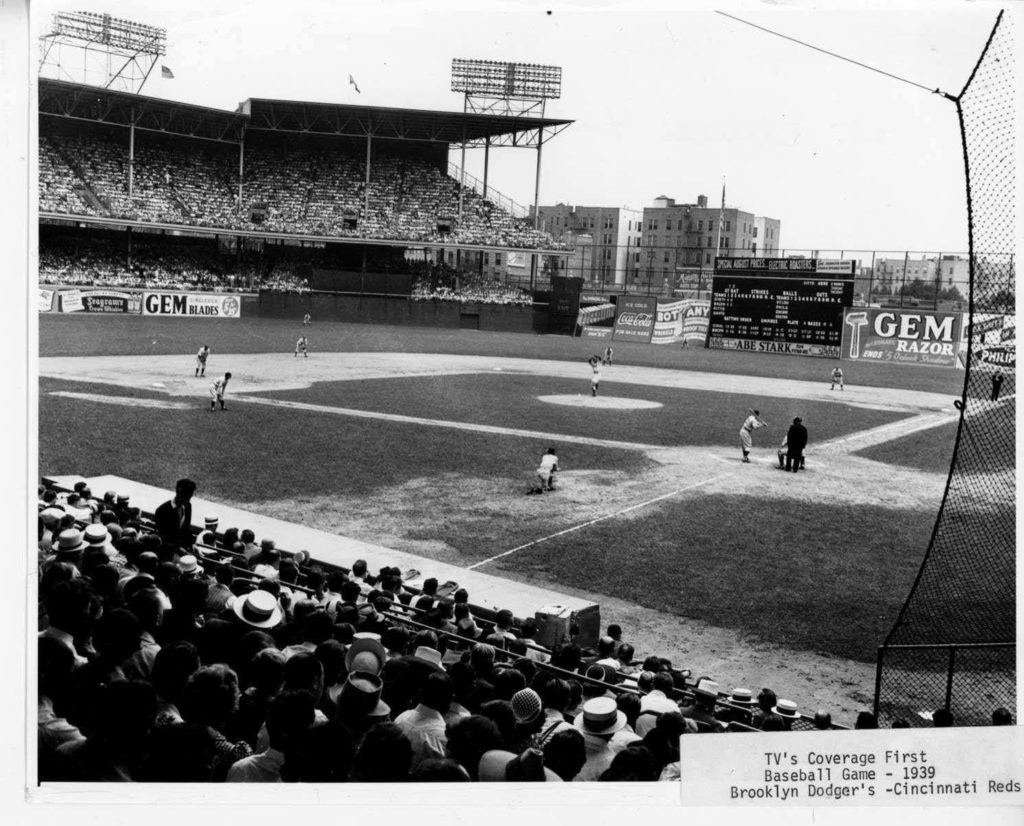
August 25, 1968…NBC Debuts Color Portables In Chicago
On August 25, 2016
- Archives, TV History
The day before the riotous Democratic National Convention opened in Chicago, NBC broadcast color images from the convention floor, using these new cameras.
Although not a product of the RCA Broadcast Electronics Division, this portable color mini camera, as it turns out, was developed by RCA’s Astro Electronics Division.
The Astro Electronics Division of RCA was formed in 1958 and was responsible for building SCORE…the world’s first communications satellite, five years before Telstar. Project SCORE (Signal Communications by Orbiting Relay Equipment) was launched on December 18, 1958, and placed the United States at an even technological par with the Soviet Union as a highly functional response to the Sputnik satellites.
This camera was developed in 1967 for use on the moon missions. It used three one inch Vidicon tubes, the same electrostatic types used in the RCA TK-27 film chain cameras to reduce power consumption. – Bobby Ellerbee
August 25, 1958…”Concentration” Debuts On NBC
On August 25, 2016
- TV History
August 25, 1958…”Concentration” Debuts On NBC
The original network daytime series, “Concentration”, appeared on NBC for 14 years, 7 months. With 3,796 telecasts, this was NBC’s longest running game show. Hugh Downs was the original host and served from ’58 till ’69. During this time, Hugh was also Jack Paar’s side kick on “Tonight” but in ’63, Downs became the new anchor on “Today”. In ’85, The Guinness Book Of Records recognized Hugh Downs for holding the record for the greatest number of hours on network television.
“Concentration” had a lot of homes, but the daytime version was always inside 30 Rock. From ’58 till ’65 Studio 3A was home. 1965 till 1967, it was 3B, and 8G from ’67 till ’73. This was the last show on the NBC roster to go color and that happened November 7, 1966.
There were two short lived night time versions…one was hosted by Jack Barry in 1958 for four weeks from Studio A at NBC’s 67th Street location, which was where the “Home” show was done. The second primetime version was April to September of ’61 from the Ziegfeld Theater on Monday nights with Bob Clayton as host.
When Downs left in ’69, Bob Clayton took over, but three months later Ed Mcmahon hosted for six months during Clayton’s leave of absence for an illness.
The show ended in ’73, but six months later, it was back on NBC as a Goodson – Todman syndicated production from the west coast with Jack Narz as host, and ran till ’78. Art James was the original announcer. By the way, the girl in the photo is PA Patty Prebble who later married Jack Barry. -Bobby Ellerbee


“The Tonight Show” Crew In Action…A Behind The Scenes Look
On August 24, 2016
- TV History
“The Tonight Show” Crew In Action…A Behind The Scenes Look
In the embedded video below, you’ll see what the audience in Studio 6B saw, when Jimmy Fallon and Jon Hamm did a fast paced blackout routine live. At this link, you can see how it looked to us at home, which is quite different. https://youtu.be/TcKT0vbMhkU
Our friends on camera include Kurt Decker on #1 (far left), Pat Casey #2, Mike Cimino #3 (baseball cap), Bruce Dines #4, Rich Carter #5 (the Merlin mini jib) and Edward Pladdys who runs the 4 remote robo cameras, one of which shot this scene. One of the best camera crews in the business! Thanks to Bob Sewvello for these fun links! Enjoy and share! -Bobby Ellerbee
https://www.youtube.com/watch?v=xwXQRhZsIIg&feature=youtu.be
A peek at what happens behind the scenes during a taping of Jimmy and Jon Hamm’s ’80s TV show. Subscribe NOW to The Tonight Show Starring Jimmy Fallon: http:…
Remember This? I Had One, Who Else Had One?
On August 24, 2016
- TV History
Remember This? I Had One, Who Else Had One?
“Plunk your magic twanger, Froggy”! Sound familiar? Ever seen it said in COLOR? No? Then click this link for a surprise, and read on for more surprises. https://www.youtube.com/watch?v=L9pPFCjRPvM
I watched “Andy’s Gang” on NBC, which ran from August 20, 1955, to December 31, 1960. It was hosted by actor Andy Devine and was the successor to the radio and television programs “Smilin’ Ed McConnell And His Buster Brown Gang”, later shortened to “Smilin’ Ed’s Gang”. Devine took over the television program when Ed McConnell died suddenly from a heart attack in 1954. McConnell took it to TV in 1951. Devine inherited a number of the characters on the show and the sponsor, Buster Brown shoes.
When Devine took over, some episodes of the show began to be shot in color at The Nassour Studios in Los Angeles, which later became Metromedia Square. This was the first television job for a lady that would become one of the top cartoon voices in the business…June Foray (voice of Rocky on “Rocky & Bullwinkle”, among many others).
Thanks to Barry Mitchell for sending this picture of Froggy, which is in the window at Antiques & Collectibles at 40 West 25th Street, New York, in case you need another. Froggy squeaks and sticks his tongue out when you squeeze him…much like Arch Presby, the show’s announcer and voice of Froggy. Enjoy and share! -Bobby Ellerbee
Behind The Scenes…NBC Sports Olympic Coverage Wrap Up
On August 24, 2016
- TV History
Behind The Scenes…NBC Sports Olympic Coverage Wrap Up
Two years of planning, 102 shipping containers of gear, 1000 cameras, 2700 monitors, and 3000 people, all came together for NBC to televise 11,000 athletes competing in 28 sports over 37 venues.
Thanks to Andrew Jackson at NBC’s Englewood Cliffs NJ facility, the master control, transmission and uplink HQ for all NBC cable channels, for sharing the video with us. -Bobby Ellerbee
Relive the magic… Go behind the scenes of NBC’s 2016 Rio Olympic Games coverage, from the host site in Brazil to the NBC Sports offices in Stamford, Connecticut. NBC Olympics


A Musical Trip Down Memory Lane With The Great Johnny Mercer.
On August 23, 2016
- TV History
A Musical Trip Down Memory Lane With The Great Johnny Mercer…
If you’ve ever heard “Moon River”, “The Days Of Wine And Roses”, “Autumn Leaves”, “Hooray For Hollywood”, “That Old Black Magic”, “Laura”, “Something’s Gotta Give”, “Birth Of The Blues”, “Jeepers Creepers”, “To Marvelous For Words”, “I’m An Old Cowhand From The Rio Grande”, “Blues In The Night”, “You Must Have Been A Beautiful Baby”, you’ve heard at least 13 of the hundreds of huge songs he wrote.
Everybody from Frank Sinatra, Judy Garland and Ella Fitzgerald to Louis Armstrong, Andy Williams and well…you name it, have recorded his songs, that still live in our memories.
In this 8 minute clip, Steve Alan and Johnny run through a dozen or more of his songs in a kind of “sing off” that will amaze you.
By the way, I’ve added a new Facebook page to share some of my favorite music from my 50 years in radio and television. It’s called Ears Of A Generation, so if you like music that makes you feel good, stop in and take a listen at the link below! -Bobby Ellerbee
https://www.facebook.com/Ears-Of-A-Generation-295938424114838/
https://www.youtube.com/watch?v=2YFT8MixHSE
Songwriting. legend JOHNNY MERCER performing some of his classics…


Creating The SNL Title Sequences…A Detailed Look At The Process
On August 23, 2016
- TV History
Creating The SNL Title Sequences…A Detailed Look At The Process
This is heaven for the many pro photographers and videographers among us, but even for laymen, this is quite interesting. Here is the detailed and technical description of the photographic process from the man who did it Alex Buono.
From the lens tricks and cameras used, to the special effects, it’s all here. The most experimental footage was relegated to the interstitial bumpers, watch out for them during the commercial breaks. The one I like best is the custom bokeh technique. This one looks like a magic trick…as the main shot goes out of focus, the background lights come into focus as tiny SNL logos.Enjoy and share! -Bobby Ellerbee
http://www.alex-buono.com/how-we-did-it-snl-titles-sequence/
Alex Buono | HOW WE DID IT — SNL Title Sequence
…And we’re back! After a much-needed summer hiatus, it’s that time of the year again when my comrades in the SNL Film Unit all reconvene on the 17th floor of 30 Rockefeller Plaza for another season of filmmaking speed-drills.
Page 17 of 136
« Previous
1
2
3
4
5
6
7
8
9
10
11
12
13
14
15
16
17
18
19
20
21
22
23
24
25
26
27
28
29
30
31
32
33
34
35
36
37
38
39
40
41
42
43
44
45
46
47
48
49
50
51
52
53
54
55
56
57
58
59
60
61
62
63
64
65
66
67
68
69
70
71
72
73
74
75
76
77
78
79
80
81
82
83
84
85
86
87
88
89
90
91
92
93
94
95
96
97
98
99
100
101
102
103
104
105
106
107
108
109
110
111
112
113
114
115
116
117
118
119
120
121
122
123
124
125
126
127
128
129
130
131
132
133
134
135
136
Next »